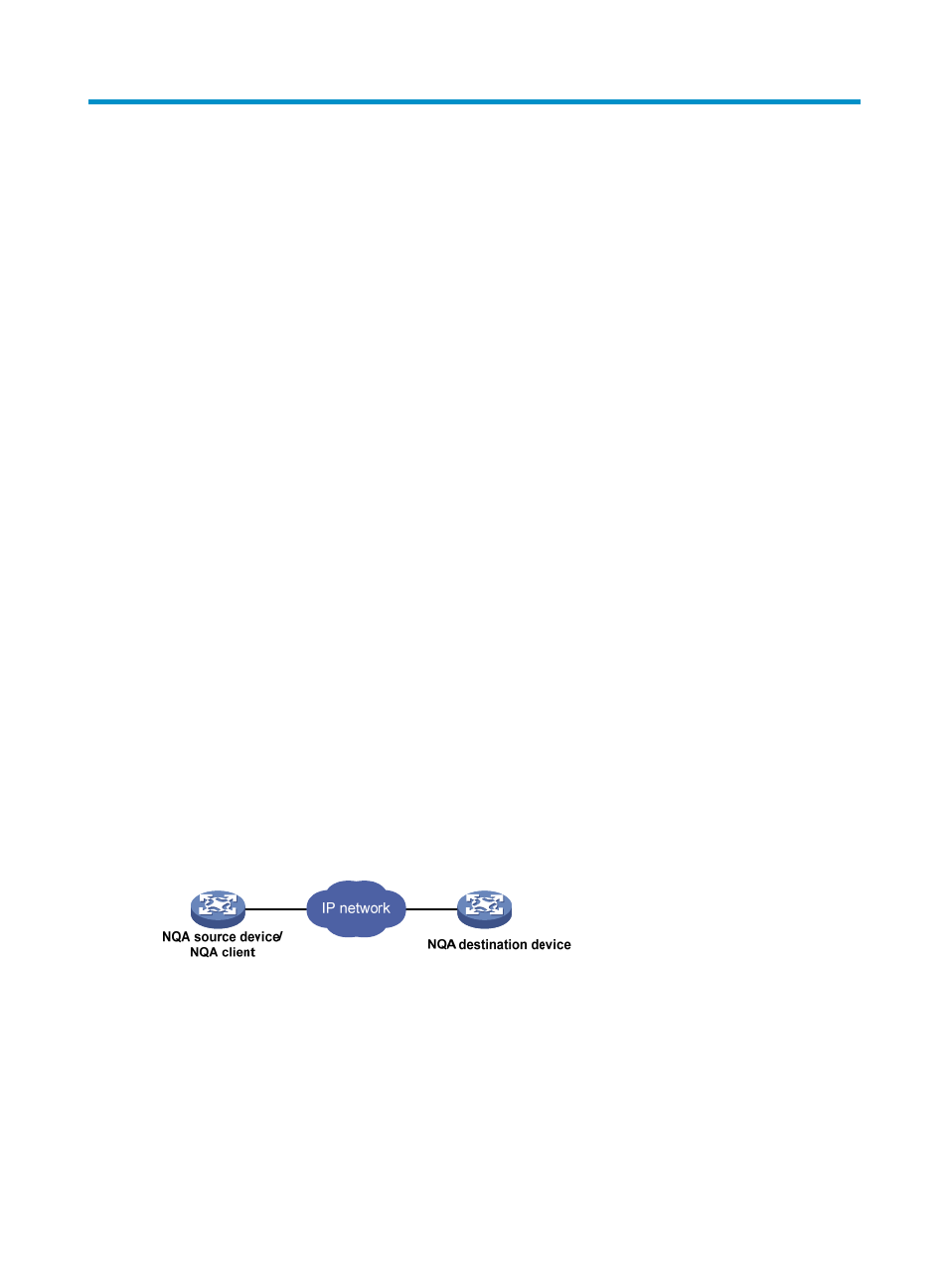Configuring nqa, Overview, Collaboration – H3C Technologies H3C MSR 50 User Manual
Page 119

Configuring NQA
Overview
Network quality analyzer (NQA) allows you to monitor link status, measure network performance, verify
the service levels for IP services and applications, and troubleshoot network problems. It provides the
following types of operations:
•
ICMP echo
•
DHCP
•
DNS
•
FTP
•
HTTP
•
UDP jitter
•
SNMP
•
TCP
•
UDP echo
•
Voice
•
Data Link Switching (DLSw)
As shown in
, the NQA source device (NQA client) sends data to the NQA destination device
by simulating IP services and applications to measure network performance. The obtained performance
metrics include the one-way latency, jitter, packet loss, voice quality, application performance, and
server response time.
All types of NQA operations require the NQA client, but only the TCP, UDP echo, UDP jitter, and voice
operations require the NQA server. The NQA operations for services that are already provided by the
destination device such as FTP do not need the NQA server.
You can configure the NQA server to listen and respond on specific ports to meet various test needs.
Figure 36 Network diagram
Collaboration
NQA can collaborate with the Track module to notify application modules of state or performance
changes so that the application modules can take predefined actions.
106